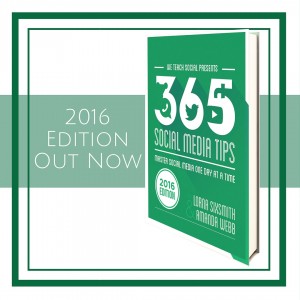 What makes a business blog successful? We all know that a successful business blog can deliver on increased traffic to a website, it can achieve significant shares on social media networks and it should increase leads and sales but what ingredients are needed to make it successful?
What makes a business blog successful? We all know that a successful business blog can deliver on increased traffic to a website, it can achieve significant shares on social media networks and it should increase leads and sales but what ingredients are needed to make it successful?
Having just organised the Blog Awards Ireland 2013 and crowned 33 bloggers winners, it is wonderful to see just how many bloggers are passionate about their craft, not just for business reasons but because they want to be the best. I’m using some of the winners as examples to showcase great blogging practice.
#1. Interesting and Knowledgeable Content
Your blog is the window dressing of your business. Just as a shop window will feature attractive and appealing new fashions or new gadgets, your blog is your space to impress potential customers with your products by showcasing them. It is also your vehicle to show readers that you are knowledgeable about the subject area, that they can ask you questions about the product or service and feel confident you are providing correct information.
Many people express surprise that I write so many posts about social media showing people how to use it effectively. However, social media is all about sharing. By sharing my knowledge with readers, some will take it and run and good luck to them, others will realise I know what I am talking about (or I hope they do!) and will contact me for a tutorial or to book an online course.
The content should also include highly searched keywords – keywords that you know people are searching for, so they find your blog post and benefit from your knowledge. Here’s how to use the google keyword planner to ensure you are using the correct keywords.
#2. Passion and Personality
Your blog is your ‘doorman’ to your business. Just as Harrods have friendly doormen who will order taxis, give directions and answer questions, all the time symbolising the luxury and helpfulness of Harrods, your blog will serve to demonstrate the personality behind your business. Winner of ‘Best SME Blog’, the writers of the One Fab Day blog are clearly passionate about everything to do with weddings from colour palettes to wedding cakes.
#3. Good Layout and Navigation
Part of the success of a good blog post is one that is ‘easy on the eye’. It should be relatively easy to read in that it should be laid out well, with subheadings and photographs breaking up long pieces of text. The font should be clear against the background. Readers should be able to find other pages within the website or blog if they wish to do so and links to other websites or blogs should be clearly indicated with hyperlinks. Molly Moo, which won Best Designed Blog, has a clear layout and navigation as well as passion behind her blog.
#4. Consistency
Some businesses will write a blog post once a week, some will go for twice a week or once a fortnight. Although more is better for SEO reasons, the number of times you write a post doesn’t matter as long as it is consistent. If you write four times a week for a month and then disappear for three weeks, it doesn’t reflect well on the reliability of the business or how you might treat your customers.
Businesses can vary their consistency e.g. I used to post twice a week here but it has now been reduced to once a week because I’m writing a book, launching a new business and I was organising the blog awards. As things stand at the moment, it will probably remain at once a week for a while. Readers like consistency, they like knowing they can read a quality blog post once or twice a week when it is material they are interested in.
Sometimes people decide to take up a blogging challenge such as blogging every day for a month. Unless you have sufficient time, a team of writers and a bank of topics, I would urge you not to take up the challenge. It would be very difficult to maintain that and if quality suffers, it will reflect badly on you. Quality first, volume second.
#5. Spelling Matters Too
Occasional typos will slip through. However, it is important that spelling, punctuation and grammatical errors are kept to a minimum.
#6. Solving Problems, Answering Questions, Meeting Needs
Writing interesting blog posts is not telling readers about your products or services. It is not revealing the features of your products or the wonder of your services. It is about how your products or services can solve problems, can meet the needs of your customers. For example, people sometimes come to this blog to find out how to use pinterest more effectively for their business, it is giving them that knowledge and meeting those needs while at the same time suggesting that they could further their knowledge by taking a course. If I am trying to decide on a type of vacuum cleaner to buy, I would prefer to read a blog post which shows me how the hoover almost lifts the carpet with its strong suction, removes pet hairs effectively and has tools to reach into awkward corners when I’m vacuuming the car. I don’t want to read about its power levels or its speed – I want to see proof that it is the best hoover for my needs.
#7. Tips & Tutorials
Offering tips, tutorials and ‘how to’ blog posts go down well with readers. Instructions with diagrams or photographs make a solution easier to understand and they work to make the business more personable. People buy from people and they will remember you if you have helped them. Chill Insurance, winner of best Corporate blog at the Blog Awards, offers sound advice on how to save money when asking for insurance quotes – sound advice which is likely to be appreciated and gain them new customers.
#8. Effective Calls to Action
Business blogs need a call to action at the end of most of their blog posts. It makes sense really from a business perspective – if you are providing your readers with much needed information, they may like to give you some business. But readers do need those call to actions, they need to know where they can buy your product or service. Many of them may have come to your blog because they want that product.
When I first started blogging back in 2007, I didn’t know anything about calls to action. When I received telephone calls from readers wondering where they could purchase the product I had written about (and yes, I sold it on my online store), it took a few calls for the penny to drop – people needed to know where they they could buy the product they had just read about. If I am convinced by the worth of a vacuum cleaner by a good review on a blog post, I want the link to where I can purchase it.
A call to action doesn’t always have to be a link for a purchase. It might be a request for a comment or a like on a facebook page.
As mentioned above, Chill Insurance offered advice on how to save money on insurance and their call to action kindly provides details on how to get a competitive quote on your insurance – simply fill out a form or give them a call.
#10. Professionalism
Your blog needs to be professional at all times – this means using language that is respectful to your audience, and being respectful of all persons who may or may not read it.
#11. Friendly Interaction
 Your blog is the hub of your social media activity. You create material on it that is good enough to share across the other social networks, this will drive traffic back to your blog and hence to your website. All of the social media platforms offer you the scope to interact with customers, not least the commenting facility on your blog. If you get tens or hundreds of comments, you don’t have to reply to each one. However, if you just get a few or if someone asks you a question, it is good practice to respond. It is surprising just how many bloggers ignore the comments on their blog but it is good manners to respond when someone has taken the time to write a comment on your blog, particularly if it adds something to the conversation. Greenside Up, winner of best overall blog, always takes the time to respond to blog comments and it has the effect too of encouraging readers to comment again and again.
Your blog is the hub of your social media activity. You create material on it that is good enough to share across the other social networks, this will drive traffic back to your blog and hence to your website. All of the social media platforms offer you the scope to interact with customers, not least the commenting facility on your blog. If you get tens or hundreds of comments, you don’t have to reply to each one. However, if you just get a few or if someone asks you a question, it is good practice to respond. It is surprising just how many bloggers ignore the comments on their blog but it is good manners to respond when someone has taken the time to write a comment on your blog, particularly if it adds something to the conversation. Greenside Up, winner of best overall blog, always takes the time to respond to blog comments and it has the effect too of encouraging readers to comment again and again.
#12. Crediting Sources
Last but not least, it is important to credit your sources. If you find information on another article that you are using in your blog post, reference it with a hyperlink. If you are using a photograph from another source, reference it – see how I have referenced the photograph I am using from photopin – most bloggers tend to credit photographs at the end of their blog posts.
What do you think makes or breaks a business blog? If you would like to improve your business blogging, we run online courses in business and personal blogging.
photo credit: Simon & His Camera via photopin









Pingback: Blogging Success and making revenue | jhernan28sami
Pingback: Successful Business Blogging, Studying Online and Facebook Advanced